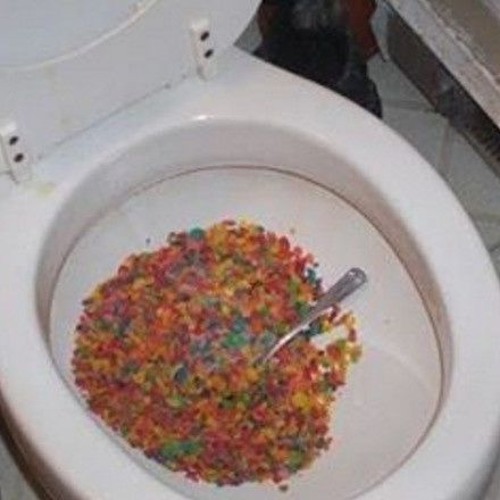This great article further down relating to Think Twice Before Flushing Food Down Your Toilet is highly compelling. You should investigate for yourself.

Introduction
Lots of people are usually faced with the predicament of what to do with food waste, particularly when it pertains to leftovers or scraps. One usual inquiry that occurs is whether it's all right to purge food down the commode. In this write-up, we'll look into the reasons why people might consider flushing food, the consequences of doing so, and alternate approaches for appropriate disposal.
Reasons people could take into consideration flushing food
Absence of understanding
Some individuals may not understand the potential injury brought on by flushing food down the bathroom. They might wrongly believe that it's a safe practice.
Comfort
Purging food down the toilet might look like a fast and easy solution to disposing of undesirable scraps, particularly when there's no nearby trash can readily available.
Idleness
In some cases, people may just select to flush food out of sheer laziness, without thinking about the effects of their activities.
Repercussions of flushing food down the bathroom
Environmental impact
Food waste that winds up in rivers can contribute to contamination and injury marine environments. Furthermore, the water made use of to flush food can strain water resources.
Plumbing problems
Purging food can bring about stopped up pipes and drains pipes, triggering pricey pipes fixings and aggravations.
Types of food that must not be purged
Coarse foods
Foods with coarse structures such as celery or corn husks can get entangled in pipes and create clogs.
Starchy foods
Starchy foods like pasta and rice can absorb water and swell, causing obstructions in pipelines.
Oils and fats
Greasy foods like bacon or cooking oils should never ever be purged down the commode as they can solidify and trigger obstructions.
Appropriate disposal techniques for food waste
Making use of a waste disposal unit
For homes equipped with garbage disposals, food scraps can be ground up and flushed through the plumbing system. Nonetheless, not all foods appropriate for disposal in this manner.
Recycling
Particular food product packaging products can be recycled, reducing waste and lessening environmental effect.
Composting
Composting is a green means to throw away food waste. Organic materials can be composted and utilized to improve soil for gardening.
The significance of appropriate waste administration
Lowering environmental damage
Proper waste management methods, such as composting and recycling, help lessen air pollution and protect natural resources for future generations.
Shielding plumbing systems
By staying clear of the practice of flushing food down the toilet, home owners can protect against costly pipes repairs and preserve the honesty of their pipes systems.
Verdict
Finally, while it might be alluring to purge food down the bathroom for benefit, it is essential to understand the potential consequences of this action. By embracing proper waste monitoring techniques and taking care of food waste responsibly, individuals can add to healthier plumbing systems and a cleaner environment for all.
FLUSH FOOD DOWN THE TOILET?
FLUSHING FOOD CAN CAUSE BLOCKED DRAINS IN YOUR HOME
All of the plumbing fixtures in your home are connected to the same sewer pipe outside of your home. This outdoor sewer pipe is responsible for transporting all the wastewater from your home to the Council sewer mains. Even small pieces of food that go down the kitchen sink can cause problems for your sewer. It should therefore be obvious that flushing larger bits of food, such as meat, risks a clog in either the toilet itself or the sewer pipes. Flushing greasy food is even more problematic because oil coagulates when it cools, coating the interior lining of your pipes.
THE TOILET IS NOT A BIN
Food isn’t the only thing that people shouldn’t be flushing down the toilet. People use the toilet to dispose of all kinds of things such as tampons, makeup wipes, dental floss, kitty litter and even underwear. Water goes to great lengths to educate residents about the high costs and stress placed on wastewater treatment systems simply from people flushing the wrong stuff down the toilet. It costs taxpayers millions of dollars each year, and homeowners thousands in blocked drain repairs.
FLUSHING FOOD IS A WASTE OF WATER
Flushing food is a waste of our most precious resource - water. In June this year Level 1 water restrictions were introduced to protect water supply from drought conditions. Much of New South Wales continues to be affected by prolonged drought with recent figures revealing up to 97 per cent of the state remains in drought. Depending on whether you have a single or dual flush toilet, every single flush uses between five and 11 litres of water. In the current climate this is a huge amount of water to be wasting on flushing food that should be placed in the bin (or better yet, the compost).
https://www.jabplumbingsolutions.com.au/blog/can-you-flush-food-down-the-toilet

We hope you enjoyed reading our article about Is it safe to flush food (especially rice) down the toilet?. Many thanks for taking a few minutes to read through our article. Are you aware of another person who is sincerely interested in ? Do not hesitate to promote it. We value your readership.
Course Detail